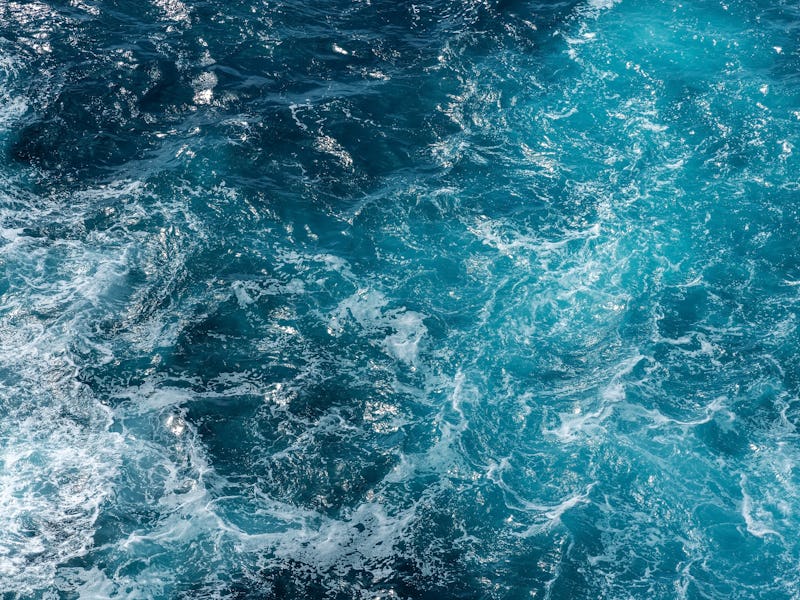3-billion-year-old rocks reveal just how dramatically different Earth once was
Welcome to the Waterworld.

Early Earth was no barren, lifeless landscape. Instead, it may have been covered entirely with water.
Welcome to the Waterworld.
Rocks aged 3.24 billion years reveal the Earth may have had absolutely no surface land at at least one point in its early history, according to a new study.
Taken from the former oceanic crust of Western Australia, the ancient rock samples contain oxygen isotopes consistent with an entirely oceanic environment, suggesting that Earth was once composed of one giant, globe-spanning ocean.
The study was published on Monday in the journal Nature Geoscience.
Oceans in the desert
The study uses data from more than 100 rocks taken from the Australian outback’s Panorama district. These days, the area is desert-like, lead author Benjamin Johnson, assistant professor Iowa State University, said in a statement. But that wasn't always the case.
"Today, there are these really scrubby and rolling hills that are cut through by dry river beds," Johnson said. "It's a crazy place."
“There are no samples of really ancient ocean water lying around,” Johnson said, “but we do have rocks that interacted with that seawater and remembered that interaction.”
That's where the oxygen isotopes come in. The rocks “remember" signatures of the early ocean in levels of oxygen isotope Oxygen-18. Our modern oceans are enriched in this isotope, too, but the data reveal that these early oceans had significantly higher levels of the isotope.
The Panorama district in Australia looks very different today from its water-covered iteration some 3 billion years ago.
The isotopes' presence exposes some intriguing details about this early oceanic Earth. Levels of Oxygen-18 in the seawater decreased over time, the researchers say. But at the same time, levels of the isotope in marine sediments — the remains of life that can now be found on the dried-up sea floor — increased. The researchers propose that, as the landscape evolved some 3 to 2.5 billion years ago (in a process called continental weathering), the Oxygen-18 levels were driven down, bringing them in line with the level found in our oceans now.
The results suggest the Earth's water cycle and how it influenced the formation of the continents may be more complicated than scientists previously believed. It may be that the water cycle went through two "steady states" — one before the continents formed, and one after.
Researchers photograph the pillow basalt, once found at the ocean's bottom, 3.2 million years ago.
The data also enables scientists to zoom in on what different forms of life may have roamed this watery world some 3 billion years ago. And while the results suggest the Earth was primarily ocean, there may have been some tiny continents afloat, too, study coauthor Boswell Wing, associate professor at the University of Colorado, Boulder, said in a statement.
“There’s nothing in what we’ve done that says you can’t have teeny, micro-continents sticking out of the oceans,” Wing said. “We just don’t think that there were global-scale formation of continental soils like we have today.”
Understanding the earliest days of Earth doesn't just tell us more about our own origin story. It could enable scientists to grasp how other planets that resemble Earth evolve over time, and whether they could have the ideal conditions for life, too.
Abstract: The origin and evolution of Earth’s biosphere were shaped by the physical and chemical histories of the oceans. Marine chemical sediments and altered oceanic crust preserve a geochemical record of these histories. Marine chemical sediments, for example, exhibit an increase in their 18O/16O ratio through time. The implications of this signal are ambiguous but are typically cast in terms of two endmember (but not mutually exclusive) scenarios. The oceans may have been much warmer in the deep past if they had an oxygen isotope composition similar to that of today. Alternatively, the nature of fluid–rock interactions (including the weathering processes associated with continental emergence) may have been different in the past, leading to an evolving oceanic oxygen isotope composition. Here we examine approximately 3.24-billion-year-old hydrothermally altered oceanic crust from the Panorama district in the Pilbara Craton of Western Australia as an alternative oxygen isotope archive to marine chemical sediments. We find that, at that time, seawater at Panorama had an oxygen isotope composition enriched in 18O relative to the modern ocean with a δ18O of 3.3 ± 0.1‰ VSMOW. We suggest that seawater δ18O may have decreased through time, in contrast to the large increases seen in marine chemical sediments. To explain this possibility, we construct an oxygen isotope exchange model of the geologic water cycle, which suggests that the initiation of continental weathering in the late Archaean, between 3 and 2.5 billion years ago, would have drawn down an 18O-enriched early Archaean ocean to δ18O values similar to those of modern seawater. We conclude that Earth’s water cycle may have gone through two separate phases of steady-state behaviour, before and after the emergence of the continents.